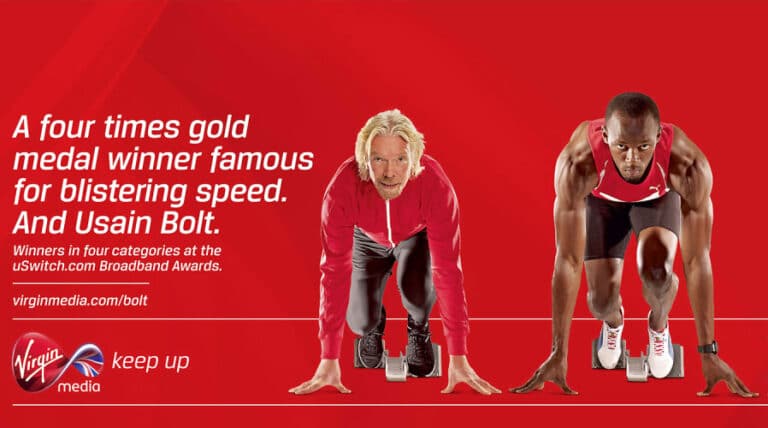Learning Agility Can be More Important than Experience
Learning agility is an important universal indication of top talent. Paired with adaptability it is one of the essential characteristics of innovative leadership and agile talent.”
Recently in Thailand, on the occasion of the annual global conference of Cornerstone International Group, I presented to a group of local CEOs on how to select tomorrow’s Top Talent. Thailand has an extreme low unemployment rate and a very tight labour market; conditions which can make for a challenging executive search process. A huge focus was being put on finding talent that combined fluency in English with relevant industry experience.
As tempting as it may be to recruit someone with years of experience in a similar job, it turns out that it is not the holy grail. Research conducted in 2014 by Claudio Fernández-Aráoz and published in the Harvard Business Review showed conclusively that experience, although not trivial, is perpetually overrated.
In recent years, other key performance qualities have become more relevant and popular. These include the right motivation and drive, commitment, mental acuity, determination and openness to new things. Although I am happy with these developments, I am convinced it is still not the whole story and that selecting people based on those qualities alone is not going to cut it.
In a world in flux – the impact of which is unprecedented – positions themselves are evolving before our very eyes. Most organizations have little use for employees with outdated knowledge and “past performance is no guarantee of future results” applies to working as well as investing. Someone may achieve great things in a certain job, and still be confronted with outdated knowledge in the immediate future, which ultimately renders them obsolete.
I am convinced that in the very near future, it will become impossible to select people based on their current skills and experience and expect them to perform well on the job. Instead, it will be imperative to shift your focus to finding future proof management and talent.
As businesses come to depend more on agile talent, their only way forward to successfully coping with the future is by unleashing their employees. Selecting the right people then takes on monumental importance. This means focusing on people who are resilient and adaptable, and who can quickly learn in completely new circumstances.
Learning agility in more detail
Learning agility is a mental trait whereby a person is willing and able to learn from experiences and then apply this knowledge in situations that are often unforeseen and quite challenging. But you have to bear in mind that unlearning, or the ability to let go of familiar opinions and ways of working, is a key dimension of learning ability.
People with high scores on learning agility will learn quickly in unfamiliar situations. Usually they will proactively ask for feedback, excel at discovering patterns within the unfamiliar and actively seek out new challenges. I believe that learning agility is the ultimate predictor of future success in roles of management and leadership in our new tumultuous world. It’s such an important indicator that it has become a critical element of our executive coaching services.
During a recent interactive guest lecture in Bangkok, I encouraged CEO’s to not only focus on candidates’ experience and skills, but to blend them with criteria such as personality, motivation and – in particular – learning agility.
John Sullivan, an internationally renowned Silicon Valley HR guru, says that learning agility has become the ultimate distinguishing characteristic for the rapidly-evolving business world. Google’s former Chief HRO, Laszlo Bock is of the same mind. He tells people that at Google they view learning agility as the leading predictor of success in the future, leaving factors like intelligence and education far behind.
Still, it is a rare quality in candidates. Korn/Ferry Institute vice president Kenneth De Meuse estimates that a mere 15 percent of all employees have strongly developed learning agility. Research by the Corporate Leadership Council suggests that no more than 30 percent of current high performers have the potential to do excellent work in a higher position. It makes sense to take learning agility into account during your focused interview, the test or assessment stage and in the in-depth reference checks.
Learning agility is the capacity for rapid continuous learning from experience. It means giving up what may have worked in the past.” – Monique Vacour, Harvard Business Review, December 2015
The importance of learning agility
There are several reasons why learning agility has become more important than ever before. In this column I cover two:
Rapid developments in technology make ongoing personal advancement imperative and place serious demands on learning agility. In today’s world, people are forced to improve themselves if they wish to keep up. The time-honoured Peter Principle describes how people are generally promoted to the point where they reach their own level of incompetence. A while back I amended it with what I call “the Charles Principle” (after Charles Darwin). The Charles Principle states that people who cannot keep developing themselves, are now becoming incompetent within their current role and will lose the struggle for survival in business.
Globalisation requires development and learning agility, as the world is increasingly becoming interconnected, Brexit and Donald Trump notwithstanding. More businesses are expanding their markets internationally, leading to more information and complexity. Businesses are now operating in a context with different cultures, interacting with a wider variety of foreign languages and broader ranges of legislation and trade agreements. International and cultural differences and the implications of these developments require training on the part of managers and employees. Obviously, fast learners have a better chance of beating their competition. In other words: the pace of learning is well on its way to overtaking knowledge itself in terms of importance.
The Peter Principle, that describes how people are generally promoted to the point where they reach their own level of incompetence, will soon be replaced by the Charles Principle. This means that people are now becoming incompetent within their current role, unless they manage to continue developing themselves.” –The Charles (Darwin) Principle
Measuring Learning Agility
In today’s recruitment process there are at least three ways to measure learning agility:
- A specialized assessment that focusses on learning agility
- A criterion-based interview that focuses on the learning agility and ability to adapt of the candidates
- Serious gaming
Of these, the first is perhaps less known to most people.
One way to measure learning agility is to present candidates with completely new situations in a focused assessment to see how quickly they learn to cope. Using similar online assessments is another way. There are various tools available; one of them is the model used by HFMtalentindex and Korn/Ferry. This model measures learning agility through four separate factors and one transcending element: self-awareness. This last element strongly affects the other four.
- Change agility. Does the candidate enjoy change? Are they curious and interested in trying out new things? People with high change agility tend to be passionate about new experiences and are keen to explore the unknown.
- Results agility. This factor focuses on the candidates’ ability to achieve goals in circumstances that may seem strange, unfamiliar and challenging. People with high results agility are generally focused on and driven by a need to achieve.
- People agility. Is the candidate able to deal with a variety of people? Those with high people agility have an open mind to others with different opinions and from different backgrounds. They are eager to gain in-depth knowledge of others and can easily adapt to different surroundings or cultures.
- Mental agility. This factor deals with the ability of a candidate to solve problems in an original or unique way. People with high mental agility are frequently provoked by new ideas, relishing the opportunity to think outside the box. They are more adept at discerning patterns in new circumstances than others are.
- Self-awareness. This factor focuses on the ability of a candidate to have a realistic view of his strengths, weaknesses and areas of improvement. People with a high level of self-awareness are drawn to self-improvement and are eager to deepen their understanding of themselves and the world around them. A high level of self-awareness can work as leverage for the other aspects of learning agility. Conversely, a low level might have the opposite effect.
Overall my conclusion and advice to the CEOs I met in Bangkok was that in contemporary search, we should no longer just focus on skills and experience. As Laszlo Bock, former senior Vice President HR of Google, would say – “we have found that learning ability is the leading predictor of success, number one above intelligence and education!”







